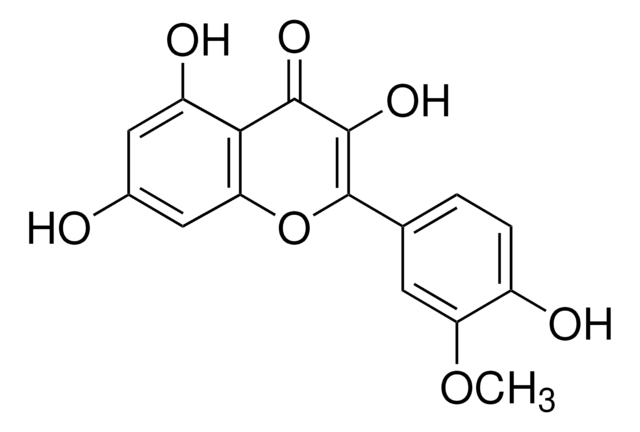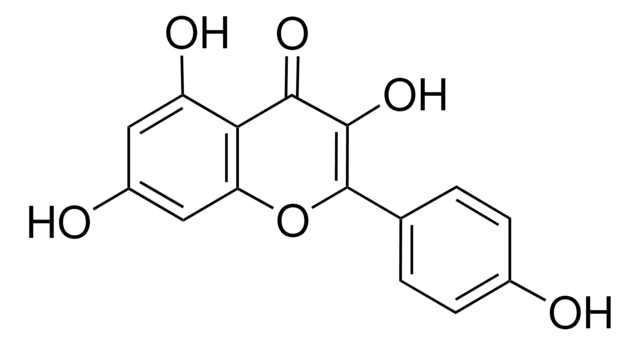17799
Rhamnetin
analytical standard
Synonyme(s) :
β-Rhamnocitrin, 3,3′,4′,5-Tetrahydroxy 7-methoxyflavone, 7-Methoxyquercetin, 7-Methylquercetin, Quercetin 7-methyl ether
About This Item
Produits recommandés
Qualité
analytical standard
Niveau de qualité
Pureté
≥99.0% (HPLC)
Technique(s)
HPLC: suitable
gas chromatography (GC): suitable
Application(s)
food and beverages
Format
neat
Température de stockage
2-8°C
Chaîne SMILES
COc1cc(O)c2C(=O)C(O)=C(Oc2c1)c3ccc(O)c(O)c3
InChI
1S/C16H12O7/c1-22-8-5-11(19)13-12(6-8)23-16(15(21)14(13)20)7-2-3-9(17)10(18)4-7/h2-6,17-19,21H,1H3
Clé InChI
JGUZGNYPMHHYRK-UHFFFAOYSA-N
Vous recherchez des produits similaires ? Visite Guide de comparaison des produits
Application
Conditionnement
Code de la classe de stockage
11 - Combustible Solids
Classe de danger pour l'eau (WGK)
WGK 3
Point d'éclair (°F)
Not applicable
Point d'éclair (°C)
Not applicable
Équipement de protection individuelle
dust mask type N95 (US), Eyeshields, Gloves
Faites votre choix parmi les versions les plus récentes :
Déjà en possession de ce produit ?
Retrouvez la documentation relative aux produits que vous avez récemment achetés dans la Bibliothèque de documents.
Les clients ont également consulté
Articles
Antioxidants protect biological systems from oxidative damage produced by oxygen-containing free radicals and from redoxactive transition metal ions such as iron, copper, and cadmium.
Notre équipe de scientifiques dispose d'une expérience dans tous les secteurs de la recherche, notamment en sciences de la vie, science des matériaux, synthèse chimique, chromatographie, analyse et dans de nombreux autres domaines..
Contacter notre Service technique








